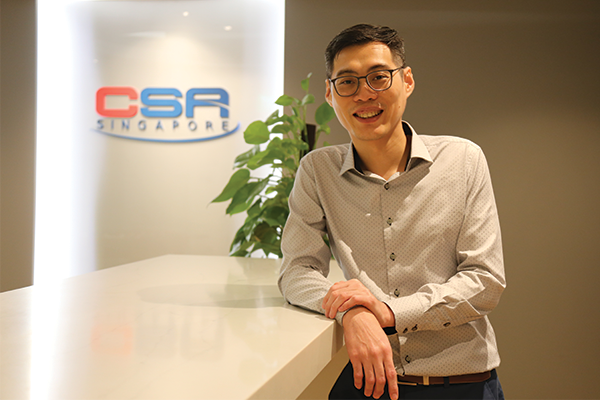Leading a team of cyber threat analysts at CSA’s National Cyber Threat Analysis Centre (NCTAC), Senior Assistant Director Lam Chang Keong studies the ever-evolving cyber landscape and provides strategic insights, enabling timely threat mitigation while guiding the development and implementation of cyber policies. Find out how CSA’s job rotation framework deepened his expertise in Cyber Threat Intelligence, and learn about his involvement in the historic DPRK-USA Singapore Summit in 2018
1. What sparked your interest in cybersecurity?
While the widespread adoption of digital technologies has provided us with opportunities to enhance the competitiveness and productivity of our economy, it has also increased our exposure to cyber threats. The cyber threat landscape is ever-evolving and it is critical we stay one step ahead of cyber criminals. Cybersecurity is an extremely dynamic domain, and I enjoy the fact that learning never stops and there are always new challenges to face and overcome.
2. What is a typical day at work like for you?
I lead a team of cyber threat analysts to conduct cyber research on and in-depth analysis of the cyber landscape and its long-term developments. Our work helps to inform and provide stakeholders with strategic insights to guide decisions on national cyber policies. Our understanding into the implications of cyber threats and issues helps CSA’s stakeholders and Critical Information Infrastructure (CII) sectors make informed decisions on prioritising cybersecurity initiatives that better enhance their posture against threats. In addition, as part of our efforts to raise awareness of cybersecurity issues and trends to enterprises and the public, our team produces publications such as CyberSense and the Singapore Cyber Landscape.
3. What makes you excited about coming to work?
Working in CSA has enabled me to broaden my views on cybersecurity matters from a national-level perspective. For instance, I was part of the team that devised threat monitoring plans during the historic DPRK-USA Singapore Summit in 2018. Although it was challenging due to the short turnaround time from the announcement of the Summit to the actual event, the various teams across CSA worked together seamlessly to coordinate efforts with CII sectors and relevant entities to enhance their posture against potential cyber threats. Invaluable experiences like this give me a sense of fulfillment as I know I have played my part in keeping Singapore’s cyberspace safe and secure.
4. Tell us something interesting about your job that not many people know about.
CSA has a job rotation framework which allows officers to develop their career paths by taking on new roles to broaden their skillsets across various cybersecurity domains. I benefited from this rotation policy and was able to move into my current role at NCTAC. This deepened my expertise in Cyber Threat Intelligence (CTI) with a more strategic focus by building on my previous experience as a lead at CSA’s National Cyber Threat Monitoring Centre, where I was responsible for tracking developments in cyberspace and forewarning CII sectors about cyber threats to prevent and disrupt potential cyber-attacks.
5. What are 3 qualities that are important for someone in your role to have?
The person must be a critical thinker with strong analytical skills, perspicacious to be able to explain complex cyber issues, and have a keen eye for detail to provide sound analysis of cyber threats.
